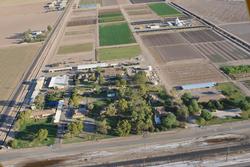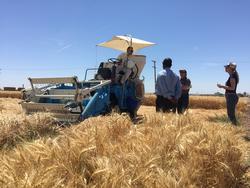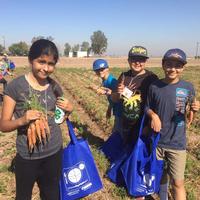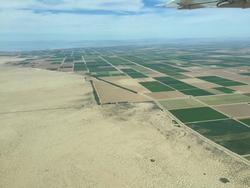Our Mission
Desert Research and Extension Center conducts innovative and relevant agricultural, natural resources, and environmental research and education programs in arid regions.
Our History and Contributions
Originally named Meloland Field Station and later called the Imperial Valley Field Station, the Desert Research and Extension Center (DREC) was established in 1912 and has grown from 10 to 255 acres. The Center was established through the cooperative efforts of the University of California, interested citizens, growers, and the Imperial County Board of Supervisors. The Center's primary research areas are desert agriculture, field crops, alfalfa breeding, vegetable crops, livestock environmental and feedlot management, irrigation and drainage management, and pest management. The center has strong partnerships with diverse stakeholders locally and in Arizona and Mexico.
Among the Center's major contributions to desert agriculture are the development of several crop varieties including Calmar, Imperial, and Calicel lettuce; Moapa, UC Cibola, CUF 101, and Sonora alfalfa; UC 157 asparagus; Imperial artichoke; UC Signal barley; and Desert King wheat (durum variety). Many current irrigation practices, including sprinkler irrigation and the use of plastic tile for field drainage, resulted from research conducted at the Center. The Center has developed key requirements for the livestock feedlot industry, and, because of its winter climate, it is a major germplasm testing point for various agronomic and vegetable crops.
DREC is also home to the widely recognized and reaching Farm Smart agricultural education program. The program focuses on major issues occurring in our local communities including access to high quality education and food, healthy habits, and pathways to higher education. Farm Smart programs promote a better understanding of agriculture, the source of our food, fiber and energy, and its impact on our economy and daily lives, as well as protecting natural resources and cultivating healthy people and communities. More than 163,000 individuals have participated in Farm Smart programs since its start in 2001.
Our Region
Crops of importance in the area and at the Center are alfalfa, wheat, barley, cotton, melons, broccoli, cauliflower, lettuce, onions, and sugarbeets. In an area where annual rainfall is less than three inches, research stresses the development of optimal irrigation-fertilization strategies that take advantage of desert conditions. The Imperial Valley has an important cattle-feeding industry, and researchers use DREC facilities to study beef and sheep feeding practices under low-desert valley conditions, where summertime temperatures can reach 120 degrees Fahrenheit.
The natural vegetation is a sparse growth of quailbrush, creosotebush, inkweed, burage, wingscale, desert buckwheat, and mesquite. The Imperial Valley receives approximately 2.9 million acre-feet of water annually from the Colorado River through the All-American Canal and a series of many laterals managed by the Imperial Irrigation District. Currently the quantity used is not restricted as long as it is not wasted as surface runoff.





